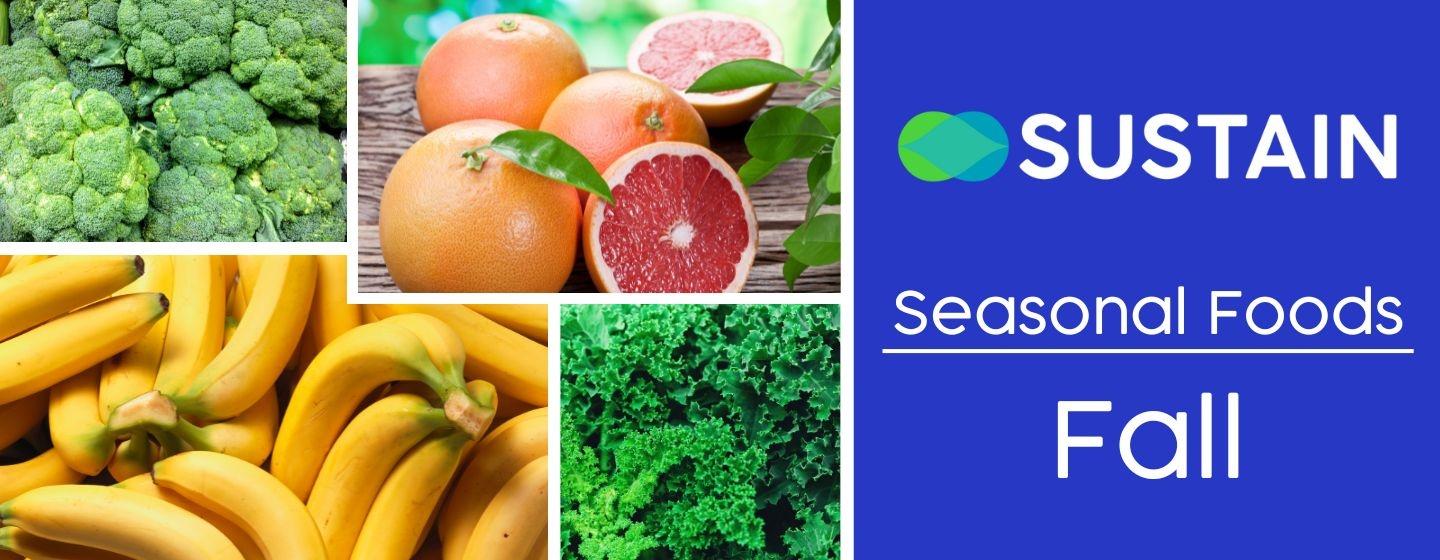Seasonal Foods | Fall


In your quest to become a more sustainable eater, one of the low-hanging fruits is buying seasonal produce. A few minutes -- every few months -- is all it takes to raise awareness on the fruits and vegetables that are ripe for the picking at a particular time of the year.
Benefits
Eating seasonal foods has three main benefits:
Many of the compounds our taste buds crave diminish over time, as do textures. Nothing worse than wilted leafy greens. The nutrients in food are not only affected by time, but also by the means in which many foods are stored and transported. Many nutrients are negatively affected by temperature, light, and exposure to water. And finally, getting that strawberry to you in the blazing heat of July likely involves a lot of transportation and cold storage...which eats up fossil fuels and money.
Oh – and you’ll generally find in season produce to be cheaper. Sustainability pays!
Fall | What’s in season?
Here in Florida, we’re fortunate to have a growing season that extends well into the fall. We also lean on our neighbors to the north for some of the items we love but can’t grow ourselves. From October – December, keep your eyes out for these seasonal fruits and vegetables:
A General Direction
Don't worry if your favorite recipe calls for something that’s not in season. Just lean into those fruits and vegetables that are in abundance this Fall and you’ll be on track to sustainable eating.
Michael